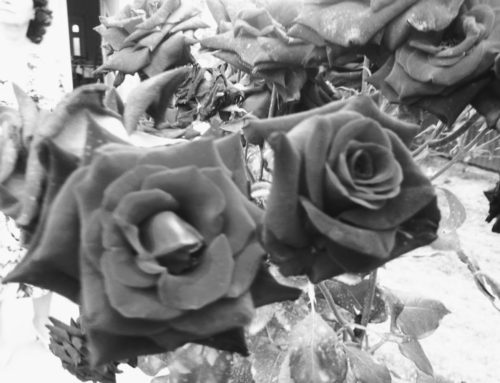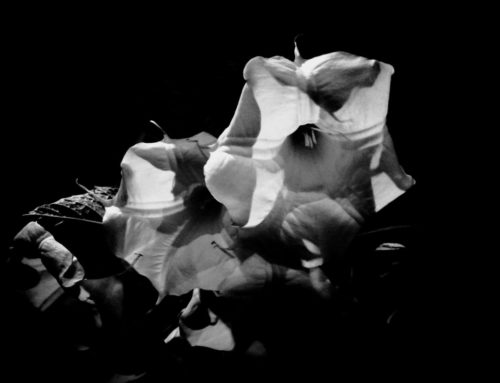 “Heart of the Ages” reverberates a transparently-cold portrayal of luminescence, and, as such, the album follows the lines of flight of those unusual emissions of light that do not derive their tenacious resilience from the temperatures of the emitting bodies. But from final meditations and other devastatingly charged allures. And it does so across a transcendental mood, which tries to reach way beyond the usual phosphorescence, fluorescence, or bioluminescence – towards their very conditions of possibility; while insistently signaling their invertebrate and physically-frozen phylic nexus of discharging. Their ageless, floating but also streamless, mounting chiasma.
“Heart of the Ages” reverberates a transparently-cold portrayal of luminescence, and, as such, the album follows the lines of flight of those unusual emissions of light that do not derive their tenacious resilience from the temperatures of the emitting bodies. But from final meditations and other devastatingly charged allures. And it does so across a transcendental mood, which tries to reach way beyond the usual phosphorescence, fluorescence, or bioluminescence – towards their very conditions of possibility; while insistently signaling their invertebrate and physically-frozen phylic nexus of discharging. Their ageless, floating but also streamless, mounting chiasma.
So, what makes these tuneful configurations really stand out is their annulment of the old-style Black-Metal adorations of darkness, with the purpose of summoning up the design of an immemorial Throne of Light, which is the Last Imaginable Heart of the Ages (and the reservoir of courage and of re-creative anticipations).
The woods hold and host (arrest) the elongated bones of Light, their alarming and attractive blasts building the torque that ensure the transfer, across the vacuum, of the magnetisms that make any type of restoration remain intact (be held together by their own atoms of acrimonious surrender).
And, just as in the late Autumn the frost-stricken mud is known to carry the DNA of unknown and unusual phyla, its frozen early radiance (matutinal icy glisten) will undoubtedly preserve and pre-serve the essence of quiet retreats, while anchoring their weather-resistant reinforcements into portrayals of yearnings (thus power-coating their trajectories). Like re-arming and positioning devices conjured from uncompromising fractals. At the other end they will all grow into self-centering and full-floating mighty melancholies: pronounced, prominent and fearsome.
Due to this luminous and wraithlike sadness that comes from wherever one left off, there can be no vast and crucial (or “crucidictional”, as Tristitia would phrase it) befitting daimonic entities, just fragile beings, left alone with (in / inside) their destinies, and with their nonsensical, yet supreme, trajectories.

The disquietude begins with the fear of being mere forsaken humans. Such ancient fears have always given birth to gods: those “lesser” gods of the woods which, according to Hermann Hesse, are mountains in themselves, mountains which would grow by swelling caressingly (but also carelessly) “over the rim of moss-grown stones” (Nathaniel Hawthorne), savage and mute, like a womb or a breast, gasping among the trees and the early hominoid dens.
In The Woods…, along their bass that works just as muscularly and as agreeably-spacious (adding much more than just the “usual” depth of perception) as the majestic guitars (uniquely fierce and primitive “chainsawish” outbursts of frenzied culminations) would portray the past as a distant but still eagerly (to the point of savagely) accepting mountain, and the present – as an ideal which broke away from its roots, like a jealous Jehovah. No one can really hide from the Mountain of Might and still be capable to live up to his dreams and to his sweet visionary paraphrases of indecision. Certainly not in a context in which decisiveness would signify nothing but some post-developed and post-continental ferocious stringless meadows (grazing lands), hatefully feeding (with their blades of grass and milk) their disastrous placenta. Early morning frost knows no melodramatic cheap “yesterday”, no “abandonment”, no “hair of gold”, no “lips of fire” and no “soft kisses” on shameful skins: just affected sylvan ravines and gorges leading towards the iconic cold essence of (real) Fire: eerie stones which pour in the evening and in the forthcoming Winter the “forces of Prima Mater that Unite us this heathen night” – i.e. the ransacking but cleverly melancholic adolescent unspoiled light of early realizations and the warmth that they have gathered during the day and during the whole Summer (Hermann Hesse).
One can mock the warm-and-fresh tears but not the frozen tears, as the latter hold in themselves that late hour of all discrepancies and deficiencies that make up the unspoiled paradox of being still alive across so many timeworn and gloomy mornings.
Burzum is echoed strongly through the whole album, but with a different attunement of ripening: madness’s resinous night of murky aluminum is replaced with the unexpected warmth and appetite emanated, in the perceptive winter forest, by autumn’s drifting and resilient aromas given off by undefeatable ferns and by alluring mushroom (both ultimate symbols of an ancient motherhood strongly embedded in all vitalist archetypes). Thus, the woman is no longer an unsafe dark wine of words and of final images originating in the criminally-insane dark space but, the cold (virginally-invigorating) cleanliness of the winter morning sipped across the inclines – the places of remanence and of settlement for the habitable Light. Such Light, according to Levinas, originates in the warmth of the feminine face and is “the condition of recollection, of the interiority of the House and of the habitation” in a hostile environment which constantly reclaims not only its elements, but also its elementarity (roughness).
Just as it was the case with the apprehensions of alchemy in which the archetypes of the unconscious were believed to perform (by in-forming the matter), in the musical images of this album (thought-graphs and ancient thought-graphemes) an incantation is writhing and squirming until it increases, with each note, the bite force of the jaws. Because the noise that hurts provokes and aggravates and, as such, it communicates directly with the unconscious power of the character. To get back from where we started this incursion, where does this harsh sound come from and how exactly does it create the luminescence of the album? That luminosity / radiance that does not derive its energy from the temperatures of the emitting bodies. The answer is: from the very violent glittery glimpse of the metal:
“[The metal] reveals an absolute existence, proposing that threatening non-me (…) At first impression, the metal seems to materialize a refusal. This refusal multiplies its images. As Guillevic says (…), the metal ‘frowns’. For example, metal is the very substance of the coldness, and this taciturnity lends itself to every metaphor. Hermann de Keyserling writes: ‘The coldness is the specific warmth of the metal’ used so as to find the cold life of the earth, the life of any existence with cold blood, the life it thinks is the basis of an entire continent. The hostility of the metal is thus its first imaginary value. Rough, strict, cold, heavy, with sharp angles, it has everything it needs to hurt, to hurt psychologically. Hegel speaks – referring to all the metals – about their unpleasant smell.” (Gaston Bachelard, Earth and Reveries of Will: An Essay on the Imagination of Matter) [1]

The metal, when absorbed into music, it becomes a metaphysical conductor. It also arrests the flows of electricity and the magnetic fields, and makes them part of its cruel glimpse and sadistic frowning. An album about metal in itself and out-and-away from itself is an album about music absorbed into the metallic radiation of natural elements – both ethereal and solid, void, melancholic and severe.
Its euphoric clarity awakens the present within us, as everything in this music comes from the (timeless) unique execution, not from following strings of notes from a musical score
Positioned in this zone of reflection and overflowing, the artist makes once again a truly Titanic use of technology, allowing his instruments to give a musical expression to the ancestral planetary forces of creation…thus escaping the modern curse of the “greenhouse effect”
“To oppose the cosmic frost infiltrating the human sphere through the open windows of the Enlightenment, modern humanity makes use of a deliberate greenhouse effect: it attempts to balance out its shellessness in space, following the shattering of the celestial domes, through an artificial civilizatory world. This is the final horizon of Euro-American technological titanism.” (Peter Sloterdijk)
End Notes:
[1] Our interpretative translation from the Romanian edition of the book, from Irina Mavrodințs translation: “[Metalul] dezvăluie o existență absolută, propunând acel non-eu dur (…) La prima impresie, metalul, se pare, materializează un refuz. Acest refuz își multiplică imaginile. Cum spune Guillevic (…), metalul ‘se încruntă’. De exemplu, metalul este însăși substanța răcelii și această răceală se oferă tuturor metaforelor. Hermann de Keyserling scrie: ‘Răceala este căldura specifică a metalului’, pentru a regăsi viața rece a pământului, viața oricărei existențe cu sângele rece, viața pe care el o socotește a fi baza unui întreg continent. Ostilitatea metalului este astfel prima lui valoare imaginară. Dur, rece, greu, cu unghiuri ascuțite, el are are tot ce-i trebuie ca să rănească, să rănească psihologic. Hegel vorbește – referindu-se la toate metalele – despre mirosul lor neplăcut.” (Gaston Bachelard, Pământul și reveriile voinței. Traducere de Irina Mavrodin. Editura Univers, București 1998, pp. 179-180)






Comenteaza